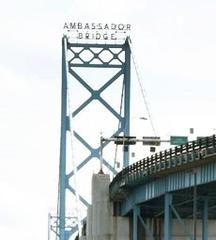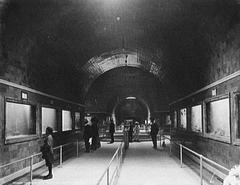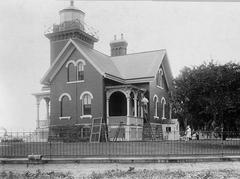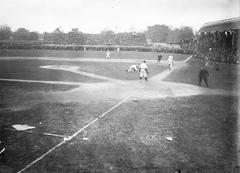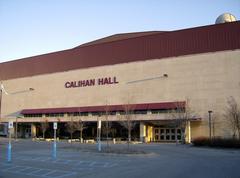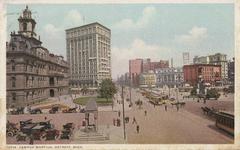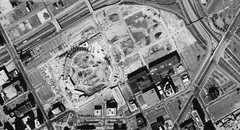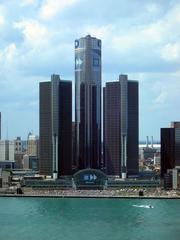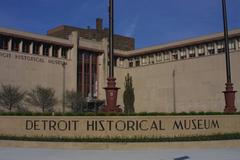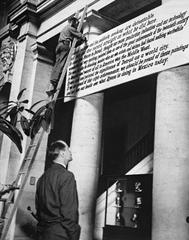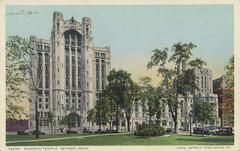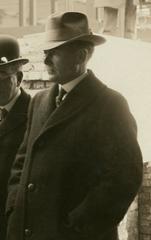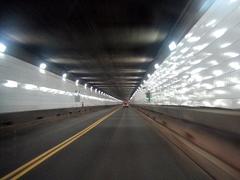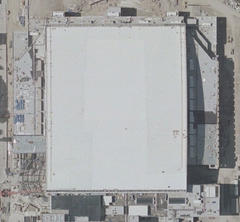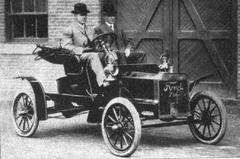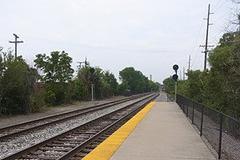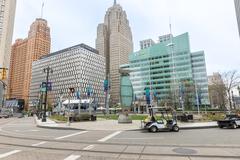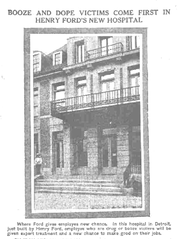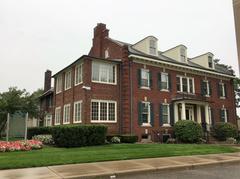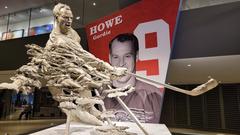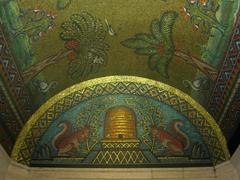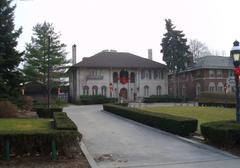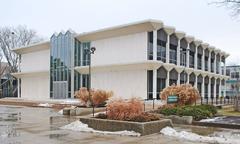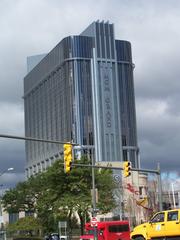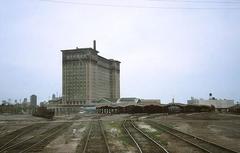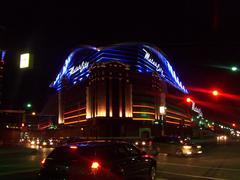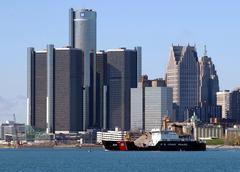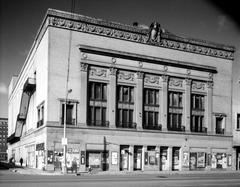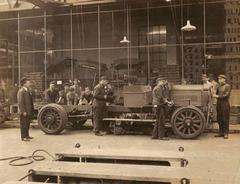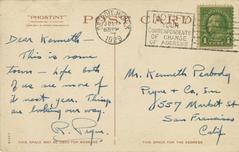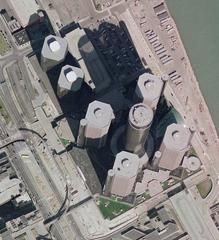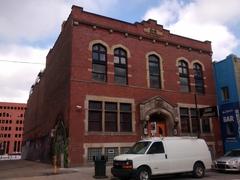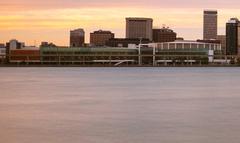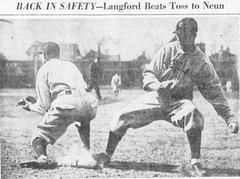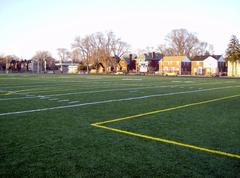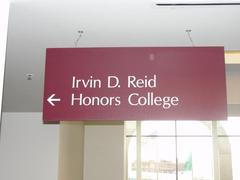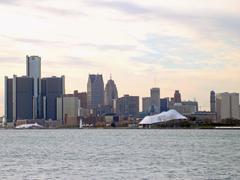
Federal Reserve Bank Of Chicago Detroit Branch Building
Federal Reserve Bank of Chicago Detroit Branch Building: Visiting Hours, Tickets, and Historical Significance
Date: 04/07/2025
Introduction
The Federal Reserve Bank of Chicago Detroit Branch Building stands as an enduring symbol of Detroit’s financial legacy and architectural innovation. Established in 1917 to regulate and stabilize the region’s monetary policy, the branch has greatly influenced Detroit’s economic development and urban landscape. Its distinctive architecture—blending a 1927 Classical Revival structure with a 1951 International Style annex—reflects Detroit’s transition from early 20th-century grandeur to postwar modernism. Today, the site serves as both a commercial hub and a destination for those interested in Detroit’s rich history and built environment (Historic Detroit, Wikiwand, Michigan Modern).
While the building no longer serves as an active Federal Reserve facility, its legacy endures through adaptive reuse and its ongoing role in the city’s downtown vitality. This guide provides a comprehensive overview of its history, architectural highlights, practical visiting information, and insights on how to best experience this Detroit landmark.
Historical Overview and Architectural Significance
Origins and Early Development
The Federal Reserve System, established by Congress in 1913, created twelve regional banks to ensure national financial stability (Wikipedia). Detroit’s inclusion in the Chicago region (Seventh District) led to the authorization of a local branch in 1917. The Detroit Branch officially opened in 1918, operating from temporary locations before the construction of a permanent facility became necessary due to the city’s explosive industrial growth.
The selected site, formerly part of Fort Shelby, carried its own historical significance. Acquired in 1921, it became the foundation for a structure designed to reflect Detroit’s stature as a financial powerhouse (Wikiwand).
The 1927 Classical Revival Building
Construction of the original building commenced in 1927, with Graham, Anderson, Probst & White—one of the era’s most prominent architectural firms—at the helm (Historic Detroit). The three-and-one-half-story structure features a steel frame clad in marble, with classical details that evoke strength and permanence. Its imposing facade and grand lobby exemplify the gravitas expected of a central banking institution (Wikiwand).
The 1951 International Style Annex
By the mid-20th century, Detroit’s ongoing economic expansion necessitated additional space. The Federal Reserve commissioned Smith, Hinchman & Grylls, with Minoru Yamasaki as the lead designer, to create an annex reflecting emerging modernist trends (Michigan Modern). Completed in 1951, the eight-story addition features a curtain wall of green glass and marble, and a set-back plaza landscaped with contemporary flair. This annex is recognized as downtown Detroit’s first significant modernist building, signaling the city’s embrace of postwar architectural innovation.
Role in Detroit’s Economic and Urban Development
For nearly eight decades, the Detroit Branch played a central role in the city’s financial ecosystem—distributing currency, processing payments, and supporting local banks and businesses (Wikipedia). Its location helped establish the Financial District as the epicenter of Detroit’s business life. The annex’s construction also influenced subsequent downtown developments and modern urban design throughout the city (Michigan Modern).
Visiting the Federal Reserve Bank of Chicago Detroit Branch Building
Current Use and Adaptive Reuse
In 2004, Federal Reserve operations relocated to 1600 East Warren Avenue. The original Fort Street building was subsequently purchased and renovated by Dan Gilbert, transforming it into a mixed-use complex that currently houses offices, including the Detroit Media Partnership (Wikiwand). This adaptive reuse has preserved the building’s architectural and historical integrity while ensuring its ongoing relevance within Detroit’s urban core. The building was listed on the National Register of Historic Places in 2008 (Wikipedia).
Exterior Access and Public Engagement
Although the building’s interior is not regularly open to the public, its striking exterior can be enjoyed year-round. The site is featured in many local walking tours, and special heritage events occasionally provide opportunities for guided visits.
Visitor Information: Hours, Tickets, and Access
Visiting Hours
- Exterior Viewing: The building’s exterior is accessible at any time.
- Interior Access: Public access to interior spaces is limited to tenants and special events. Occasional guided tours are offered during citywide events or by arrangement with local organizations.
Admission and Tickets
- Viewing the exterior: Free, no tickets required.
- Special events or tours: Check with Bedrock Detroit or Detroit tourism resources for announcements and booking information.
Location and Transportation
- Address: 160 W. Fort Street, Detroit, MI 48226
- Public Transit: Easily accessible via the QLINE streetcar, DDOT buses, and the Detroit People Mover (Detroit People Mover).
- Parking: Multiple public garages and street parking are available nearby.
Accessibility
- Exterior and plaza: Wheelchair accessible.
- Interior: Accessibility depends on event or tour arrangements; inquire in advance if special accommodations are needed.
Architectural Highlights for Visitors
- 1927 Classical Revival Structure: Marble and limestone facade, monumental columns, and classical ornamentation.
- 1951 International Style Annex: Distinctive glass-and-marble curtain wall, rooftop decks (occasionally open during special events), and landscaped plaza.
- Photographic Opportunities: The dramatic juxtaposition of architectural styles makes this building a favorite for photographers. The front courtyard and street views are ideal for capturing both historic and modern elements.
Nearby Attractions
- Guardian Building: Art Deco masterpiece two blocks east (Guardian Building).
- Campus Martius Park: Lively city square nearby (Campus Martius Park).
- Detroit Riverwalk: Scenic waterfront for walking and relaxation (Detroit Riverwalk).
- Detroit Opera House and Comerica Park: Both within easy walking distance, offering arts and sports experiences.
Special Events and Community Engagement
The building is occasionally included in citywide events such as Detroit’s Doors Open and National Historic Preservation Month, providing rare opportunities for guided tours and public access to interior spaces (Federal Reserve Bank of Chicago events page). Educational workshops and heritage tours may also be available—check local listings for details.
Frequently Asked Questions (FAQ)
Q: Can I tour the Federal Reserve Bank of Chicago Detroit Branch Building?
A: Regular interior tours are not available, but the exterior is accessible at all times. Occasional special events may offer guided access.
Q: What are the visiting hours?
A: The building can be viewed from the outside at any time. Interior access depends on specific events or arrangements.
Q: Is there an admission fee?
A: No, exterior viewing is free. Tours or special events may require advance registration.
Q: Is the building accessible for those with disabilities?
A: The exterior and plaza are wheelchair accessible; specific interior accommodations depend on event arrangements.
Q: Where can I park?
A: Public garages and nearby street parking are available throughout downtown Detroit.
Q: Can I take photographs?
A: Exterior photography is allowed from public areas. Interior photography is typically prohibited.
Tips for Visitors
- Plan ahead: Check event calendars and Bedrock Detroit’s property page for updates on tours and special access.
- Combine your visit: The building is conveniently located near several other Detroit architectural and cultural landmarks.
- Accessibility: Contact event organizers or building management in advance for questions regarding wheelchair or special access.
Additional Information for Federal Reserve System Visitors
New Detroit Branch Facility
The Federal Reserve Bank of Chicago’s operations have moved to 1600 East Warren Avenue, where the active branch offers educational programs, guided tours, and interactive exhibits (Federal Reserve Bank of Chicago – Detroit Branch).
- Public tours: Available by advance reservation.
- Hours: Monday–Friday, 9:00 AM–4:00 PM (excluding federal holidays).
- Security: All visitors must present government-issued photo ID and undergo screening (CUSBA Visitor Information).
- Accessibility: Facility is fully accessible.
Summary
The Federal Reserve Bank of Chicago Detroit Branch Building is a testament to the city’s economic resilience and architectural evolution. Though its primary role has shifted from banking operations to a vibrant mixed-use complex, it remains a striking feature of Detroit’s downtown landscape. Visitors can enjoy its exterior grandeur, participate in occasional special tours, and further their understanding of Detroit’s financial and architectural history through nearby attractions and educational programs (Historic Detroit, Wikiwand, Michigan Modern).
For up-to-date information on hours, tours, and events, consult official resources and local tourism sites. Enhance your visit with apps like Audiala and discover even more of Detroit’s historical treasures.
References
- Historic Detroit – Federal Reserve Bank of Chicago Detroit Branch Building
- Wikiwand – Federal Reserve Bank of Chicago Detroit Branch Building
- Michigan Modern – Federal Reserve Bank of Chicago Detroit Branch Annex
- Federal Reserve Bank of Chicago – Detroit Branch
- Bedrock Detroit – Federal Reserve Building
- Wikipedia – Federal Reserve Bank of Chicago Detroit Branch Building

